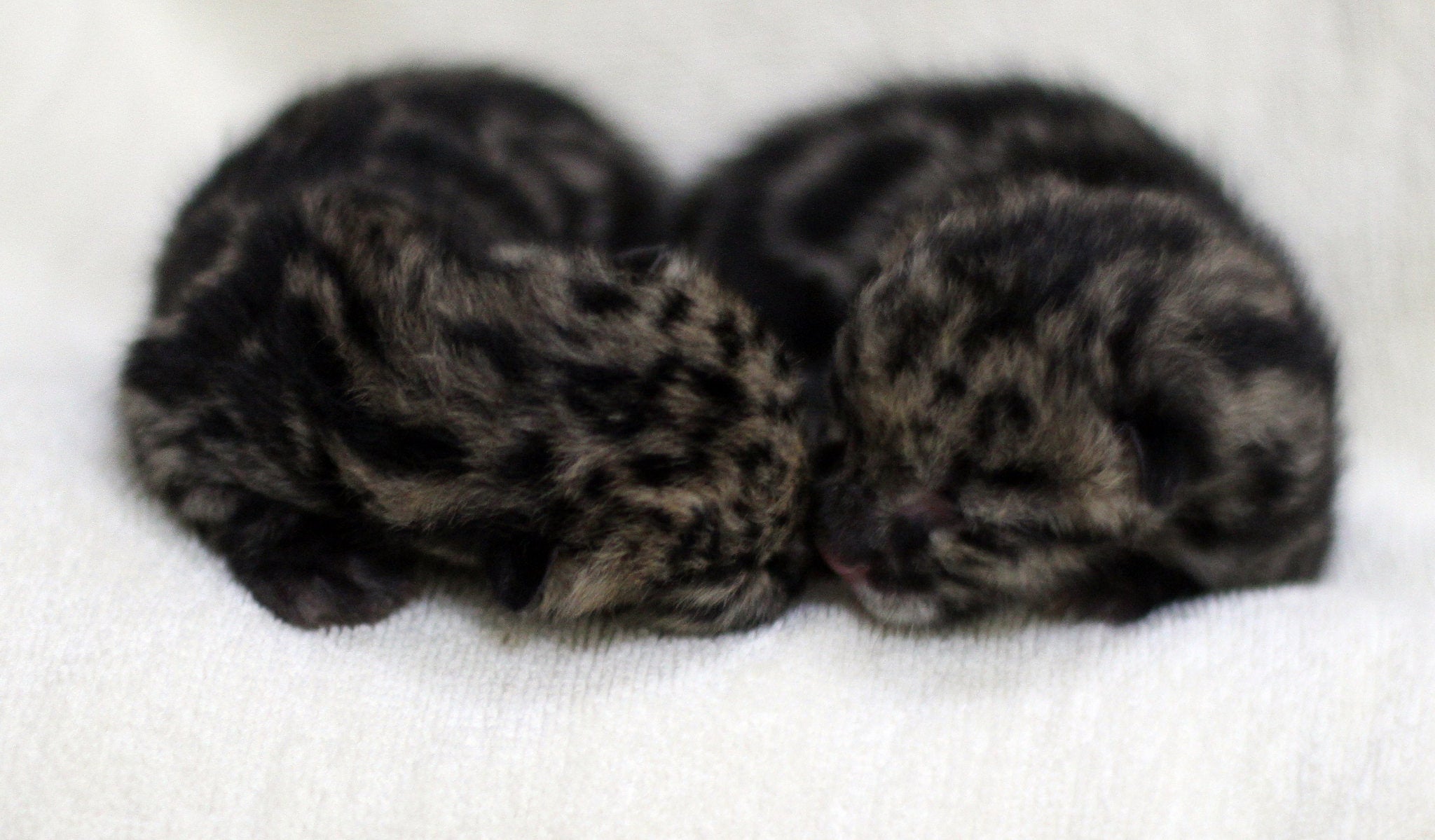Clouded Leopards Born in Thailand Via Artificial Insemination
Only the Second Time the Procedure Has Been Successful
For only the second time, a litter of clouded leopard cubs has been born as the result of an artificial insemination. Pierre Comizzoli, reproductive physiologist at the Smithsonian Conservation Biology Institute (SCBI), performed the artificial insemination in Thailand last March alongside Paweena Thuwanut, a former JoGayle Howard Postdoctoral Fellow at SCBI, and Wanlaya Tipkantha, a doctoral candidate at Chulalongkorn University, who also studied at SCBI. The two cubs were born at the Khao Khew Open Zoo in Chonburi, Thailand June 9. The artificial insemination was the first successful procedure performed on a clouded leopard outside of the United States. The first and only other successful artificial insemination in clouded leopard was performed by the late SCBI scientist JoGayle Howard in 1992.
Scientists used a new technique to artificially inseminate a clouded leopard named Gra Ding. It was the first time the technique had been used on a clouded leopard. They deposited fresh semen from two different males in low doses into her oviducts. The doses totaled between 5 and 8 million sperm cells in each oviduct. Scientists have attempted artificial insemination in clouded leopards using classical methods since 1992 several times, but none worked. Classical methods require at least 100 million sperm cells to be deposited using intrauterine insemination through laparoscopy. Gra Ding was selected for artificial insemination because she was not a successful natural breeder but is genetically valuable. The two males the semen samples were collected from were identified as good genetic matches for Gra Ding.
The birth of these two cubs is a major step forward," said Comizzoli. "Clouded leopards have been incredibly challenging for us to breed, but this new technique means we have another tool to help keep the population genetically healthy and growing."
SCBI and Khao Khew Open Zoo are members of the Clouded Leopard Consortium, which is building a sustainable population in human care of the elusive and threatened cats, and studying wild populations in Southeast Asia.
Historically, scientists have had difficulty breeding clouded leopards because of male-female aggressions. Scientists found that males would often kill females during introductions for breeding. SCBI scientists demonstrated that raising males and females together from a very young age greatly reduced the chances of aggression. Scientists and the Species Survival Plan for clouded leopards then can pair males and females determined to be good genetic matches when they are only a few weeks old, but this is not always possible.
Both cubs appear to be healthy and are doing well. Keepers at Khao Khew Open Zoo are hand raising the cubs because it produces a better survival rate. Veterinarians have not determined the sex of the cubs yet. Scientists will use paternity tests to determine which male sired the cubs. It is possible the cubs have different fathers.
Clouded leopards are listed as vulnerable in the wild by the International Union for Conservation of Nature. It is estimated that there are only about 10,000 left in the wild. Threats to the species include habitat fragmentation, deforestation and illegal wildlife trafficking.

